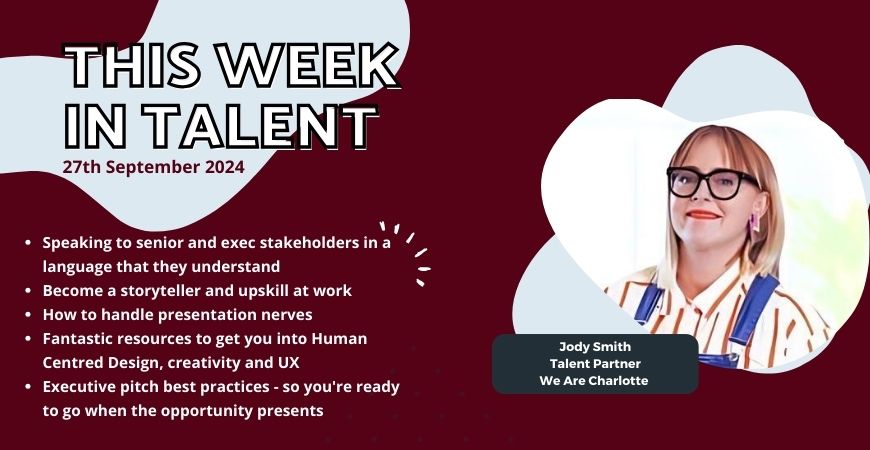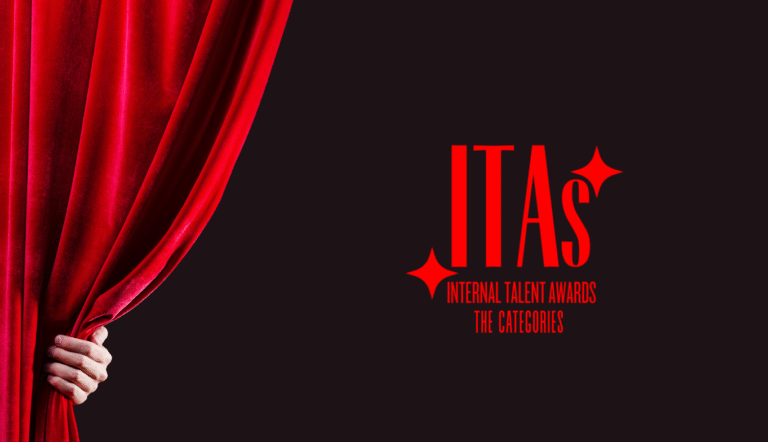Week 4 Week 4 Week 4!
It’s my last TWIT ummmm SAD! I’ve loved doing the TWIT again this month, and sharing my passions for design thinking and putting humans (not process) at the centre of the things we do.
So today I’m going to talk about senior and executive stakeholders, and the things they like to see when you’re pitching your ideas to them. Basically, you’ve got an idea, you’ve done the research, you’ve designed a prototype … and now you need the exec buy-in to launch it.
The key is to tell a story. It should be high-level, engaging, visual, and punchy. The typical story arc you should follow is:
- Set Up – set the scene for the audience. How does it tie in with the strategic vision or company blueprint?
- Inciting Incident – this is the exciting bit. What happened that made you aware of this issue? What was the risk if it wasn’t addressed?
- Rising Action – what happened next once you learned about the incident?
- Climax – what did your findings tell you? What were the key themes that emerged?
- Following Actions – what did you focus on first, and why? How did you decide on priorities?
- Resolution – what is your proposed resolution that you need buy-in for?
When you’re putting your slide deck together, there’s also a general rule of thumb I follow to partner with the story arc above. Caveat – these should be AS VISUAL AS POSSIBLE. No one likes a wordy slideshow (urrrrgh AM I RIGHT) and if you include too much detail you risk getting stuck in ‘rabbit holes’ as some execs will want to read it all and talk about it and then you’ll run out of time. High-level and visual is the way to go, with an appendix at the end that you can send out after the presentation if anyone wants to dive in deeper to the detail.
- Who We Are – Try to begin your slide pack with the core people involved in running the particular project, and their roles and responsibilities. Don’t spend too long on this slide, but use it to build credibility with your audience (aka you know your shit).
- Why We Are Here – Set the right foundation by bringing your audience back to the core of the problem you are solving for, highlighting why this project came about and what questions it aimed to explore. Address the original brief, and how the outcome of this ties into the company’s strategic blueprint.
- Where We Have Been – This sort of process can often be new and unfamiliar to people, even at the exec level. Remember to highlight the Human Centred Design process you followed, the project journey with key stages,milestones, and deliverables. Providing an overview of the qualitative and quantitative research is important too because it shows them you’re not just making this up. You’ve asked the people, and the people have told you what they want!
- What We Have Found- This is the bulk of the deck and should bring to life the critical research and project artefacts. This would typically include insights, user stories, personas, journey maps, current state blueprints etc.
- How We Will Move Forward- This is where you paint the vision of what a future state should look like, and frame strategic service improvements and recommendations to align with this. Finish off with next steps and other related projects that might impact this body of work – for example, a preliminary roadmap that maps service improvements or initiatives is also helpful to ensure accountability and execution. If you’re at the prototyping stage, it can be good to showcase some of the future state thinking here too to give the audience a vibe of the final product look and feel.
- My final tip is to curate your environment. If you get nervous pitching ideas or presenting, have a think about what sort of environment gets the best out of you and try your best to curate it that way. I find making a presentation more interactive is a fab way to ease my nerves, cause then people aren’t just sitting there looking at you waiting for you to do something and entertain them (I have anxiety just writing that). That’s usually the point where I start babbling or doing some sort of weird improv stand up comedy set? Yikes.
To prevent this from happening, I find including a cheeky Sli.do or Menti can do the trick, or EVEN chucking thoughts and question in the chat (if it’s virtual) or giving people post-it notes to make suggestions and provide feedback (if it’s in person). There’s lots of fun ways to amp up a presentation that will ease your nerves and make you look SUPER darn impressive.
SPEAKING of impressive … this year’s ATC event is a mere 2.5 weeks away, and you’d be a FOOOOOOOL to miss out. Last chance to get your tickets here ASAP, and come see a bunch of presentations. You can even see if the presenters have read this article and are using my tips above? Teee hee hee! SEE YA THERE!
This is what caught my attention this week:
Work Bestie – Newsletter
This is one of my fave newsletters (outside of ATC’s TWIT, of course). It shares different work tips, with lots related to Design as the writer of the newsletter is a Service Designer.
Creative Confidence
This is one of my favourite monthly listens by IDEO U. Each month (sometimes twice a month) they interview an expert in the field of design, strategy, even play (which is my passion). Sign up for design thinking inspo!!
Future of UX
Last podcast recommendation, but this is another goodie. I find podcasts such a great way to learn about the thinking and insights behind design, particularly co-design. This poddie focuses on technology in user experience, and how it will potentially shapre the future of UX design.
Executive Pitch Best Practices
In the spirit of pitching and getting buy-ins from Execs, this is a handy article to bookmark and reference when you’re preparing for that next exec meeting.







